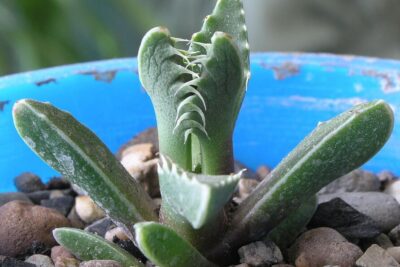
Is My Succulent Infested with Pests? Signs of White Web Infection

Succulents have become increasingly popular as houseplants due to their unique and striking appearance, as well as their reputation for being low-maintenance. However, even the most experienced succulent owners may encounter issues with pests. One common pest infestation that succulent owners may come across is the presence of white webs on their plants. These webs are an indication that the succulent has been infested with a specific type of pest, which can cause damage to the plant if left untreated.
We will discuss the signs of white web infection in succulents and the pests that are responsible for causing this issue. We will explore how to identify these pests and provide tips on how to prevent and treat infestations. Additionally, we will offer advice on general care practices that can help promote the health and well-being of your succulents. By understanding and addressing the issue of white web infestation, you can ensure the longevity and beauty of your succulent plants.
- Check the leaves and stems for small white webs
- Look for tiny insects crawling on the plant
- Inspect the soil for signs of bugs or larvae
- Remove any infected leaves or stems immediately
- Spray the succulent with an insecticidal soap
- Quarantine the plant to prevent spreading the infestation
- Increase airflow around the plant to discourage pests
- Avoid overwatering, as it can attract pests
- Consider using natural predators to control the infestation
- Consult a professional if the infestation persists
- Frequently Asked Questions
Check the leaves and stems for small white webs
If you suspect that your succulent may be infested with pests, one of the telltale signs to look out for is the presence of small white webs on the leaves and stems. These webs are typically created by common pests such as spider mites or mealybugs.
Spider mites are tiny arachnids that can cause significant damage to your succulent plants. They spin fine, white webs on the undersides of the leaves, creating a protective environment for themselves. This webbing is often accompanied by tiny dots, which are their eggs or waste products. Spider mites feed on the sap of the plant, causing the leaves to turn yellow or stippled.
Mealybugs, on the other hand, are small insects that appear as white, cotton-like clusters on the leaves and stems of succulents. They also produce white, powdery wax to protect themselves. Mealybugs feed on the plant's sap, leading to stunted growth and deformed leaves. If left untreated, mealybug infestations can spread quickly and cause severe damage to your succulent collection.
To properly identify if your succulent is infested with pests, carefully inspect both the upper and lower surfaces of the leaves, as well as the stems. Look for the presence of these white webs, as well as any signs of insects or their eggs. It's essential to act promptly if you notice any of these symptoms to prevent further damage to your plants.
 Causes of Red Tips on Succulent Plants: A Comprehensive Guide
Causes of Red Tips on Succulent Plants: A Comprehensive GuideHere are some steps you can take to address the issue:
- Isolate the affected plant: Remove the infested succulent from your collection and place it away from other healthy plants. This will help prevent the pests from spreading.
- Manually remove the pests: Use a cotton swab or a soft brush to gently wipe away the white webs and any visible insects. Be careful not to damage the plant in the process.
- Apply a natural insecticide: Treat the affected succulent with a mild insecticidal soap or neem oil, following the instructions on the product label. These organic solutions are effective in controlling pests without harming your plants.
- Maintain proper care: After treating the infested succulent, ensure that you provide it with adequate sunlight, proper watering, and good air circulation. A healthy plant is more resistant to pests and can recover faster.
- Monitor for reinfestation: Keep a close eye on the treated succulent and surrounding plants to ensure that the pests do not return. Regularly inspect your collection to catch any potential infestations early.
Remember, prevention is key when it comes to pest control. Regularly inspecting your succulents and maintaining a clean growing environment can help prevent infestations from occurring in the first place. By being proactive and taking swift action if you notice any signs of white webs or pests, you can keep your succulent collection healthy and thriving.
Look for tiny insects crawling on the plant
One of the first signs that your succulent may be infested with pests is the presence of tiny insects crawling on the plant. These pests can vary in size and color, but they are usually quite small and can be difficult to spot with the naked eye. However, if you observe closely, you may notice them moving around on the leaves or stems of your succulent.
It's important to note that not all small insects found on your succulent are necessarily pests. Some insects, such as ladybugs or lacewings, can actually be beneficial to your plant as they feed on other harmful pests. However, if you notice an excessive number of insects or if they are causing damage to your succulent, it's likely that you are dealing with a pest infestation.
If you suspect that your succulent is infested with pests, carefully inspect the leaves and stems for any signs of these tiny insects. They may appear as black, brown, or even green specks crawling around. In some cases, you may also notice small eggs or larvae attached to the plant. These insects can cause damage to your succulent by feeding on the sap, leaves, or stems, which can lead to wilting, discoloration, or even death of the plant if left untreated.
If you have identified the presence of these tiny insects on your succulent, it's important to take immediate action to control the infestation. There are various methods to treat pest infestations in succulents, including using organic insecticides, applying neem oil, or even introducing natural predators such as beneficial insects.
 Understanding and Treating the White Substance on Succulents
Understanding and Treating the White Substance on SucculentsHere are some steps to help you control the pest infestation:
- Isolation: Remove the infested succulent from other healthy plants to prevent the pests from spreading.
- Pruning: If the infestation is localized, you can prune the affected parts of the succulent to remove the pests.
- Organic insecticides: Apply organic insecticides specifically formulated for succulents to kill and repel the pests.
- Neem oil: Dilute neem oil with water and apply it to the affected areas of the succulent to control the pests.
- Natural predators: Introduce beneficial insects like ladybugs or predatory mites to feed on the pests and help control the infestation.
By following these steps and regularly monitoring your succulent, you can effectively control and eliminate the pest infestation. Remember to provide your succulent with proper care and maintain a healthy environment to prevent future infestations.
Inspect the soil for signs of bugs or larvae
One of the first signs that your succulent may be infested with pests is the presence of white web-like material in the soil. This can indicate the presence of bugs or larvae that have made a home in your plant's root system.
To inspect the soil, gently remove your succulent from its pot and examine the roots. Look for any visible signs of pests, such as tiny white or translucent bugs crawling around or small larvae hiding in the soil.
If you notice any movement or signs of infestation, it is important to take immediate action to prevent further damage to your succulent.
Signs of bug infestation
There are a few telltale signs that your succulent may be infested with bugs:
 Causes of Blue Discoloration in Succulent Leaves
Causes of Blue Discoloration in Succulent Leaves- Visible bugs: Look for tiny white or translucent bugs crawling on the roots or leaves of your succulent.
- Yellowing or wilting leaves: Pests feeding on the plant can cause the leaves to turn yellow or wilt.
- Sticky residue: Some pests, like aphids, leave behind a sticky residue called honeydew. If you notice a sticky substance on your succulent, it may be a sign of bug infestation.
- Distorted growth: Bugs feeding on your succulent can cause the leaves or stems to become distorted or deformed.
If you notice any of these signs, it is important to take action promptly to prevent further damage to your succulent and stop the infestation from spreading to other plants.
Signs of larvae infestation
In addition to bugs, larvae can also infest your succulent's soil. These immature insects can cause damage to the roots and hinder the plant's growth. Look out for the following signs of larvae infestation:
- Visible larvae: Look for small, worm-like creatures in the soil or on the roots of your succulent.
- Root damage: Larvae can chew on the roots, causing them to become brown, mushy, or discolored.
- Slow or stunted growth: If your succulent is not growing as expected or appears to be struggling, it may be due to larvae infestation.
If you suspect that your succulent is infested with larvae, it is important to take action to eliminate them and improve the overall health of your plant.
Remember, early detection and intervention are crucial in managing pest infestations. Regularly inspect your succulents and take appropriate measures to keep them healthy and pest-free.
Remove any infected leaves or stems immediately
It's always disheartening to discover that your beloved succulent is infested with pests. One common sign of infestation is the presence of white web-like substances on the leaves or stems of your plant. If you notice this, it's important to take action promptly to prevent further damage. Here are some steps you can take:
1. Identify the pests
The first step in dealing with a white web infection is to identify the specific pests causing it. Some common culprits include spider mites, mealybugs, and whiteflies. Each of these pests has distinct characteristics and requires different treatment methods, so it's crucial to accurately identify the pest before proceeding.
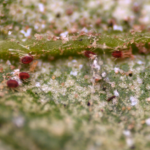 Eliminating White Webs on Succulents: A Comprehensive Guide
Eliminating White Webs on Succulents: A Comprehensive Guide2. Remove any infected leaves or stems immediately
Once you've identified the pests, carefully examine your succulent for any leaves or stems that are heavily infested or covered in the white webbing. These parts of the plant should be removed as soon as possible to prevent the infestation from spreading further.
Note: It's advisable to wear gloves or use tweezers to avoid direct contact with the pests or their webbing.
3. Treat the remaining plant
After removing the infected parts, it's important to treat the remaining plant to eliminate any remaining pests and prevent reinfestation. There are several methods you can use:
- Neem oil: Dilute neem oil according to the instructions on the bottle and apply it to the affected areas of the succulent. Neem oil is known for its insecticidal properties and can help control various pests.
- Insecticidal soap: Purchase an insecticidal soap specifically formulated for succulents and apply it according to the instructions provided. This soap suffocates the pests and is often effective against spider mites and mealybugs.
- Isopropyl alcohol: Dampen a cotton swab or cloth with isopropyl alcohol and gently wipe the affected areas of the succulent. This method is particularly useful for treating mealybugs.
4. Monitor and repeat treatment if necessary
After treating your succulent, keep a close eye on it to ensure that the infestation doesn't return. Inspect the plant regularly for any signs of pests or white webbing. If necessary, repeat the treatment process to completely eliminate the infestation.
Remember, prevention is always better than cure when it comes to pest infestations. Keep your succulents healthy by providing them with proper light, water, and ventilation. Regularly inspect your plants for any signs of pests, and take immediate action if you spot any. With proper care and prompt intervention, you can keep your succulents thriving and pest-free.
Spray the succulent with an insecticidal soap
If you notice a white web-like substance on your succulent, it may be a sign of an infestation by pests. One common pest that can cause this is spider mites. These tiny creatures are not actual spiders, but they are related to spiders and ticks. Spider mites feed on the sap of plants, which can lead to damage and even death of the succulent if left untreated.
 White-Dotted Succulents: Potential Poisonous Effects on Pets
White-Dotted Succulents: Potential Poisonous Effects on PetsTo combat a spider mite infestation, it is recommended to spray the affected succulent with an insecticidal soap. This soap is specially formulated to kill pests like spider mites without harming the plant. It works by suffocating the pests and disrupting their life cycle.
Here are the steps to follow when using insecticidal soap:
- Identify the infested succulent: Look for signs of white webbing on the plant's leaves, stems, and buds. Spider mites tend to target the undersides of the leaves, so be sure to check there as well.
- Prepare the insecticidal soap: Follow the instructions on the soap bottle to mix the appropriate amount with water. Make sure to wear gloves and protect your eyes when handling the solution.
- Apply the soap mixture: Use a spray bottle to evenly coat the affected succulent with the insecticidal soap. Be sure to cover both the upper and lower surfaces of the leaves.
- Repeat the process: Depending on the severity of the infestation, you may need to repeat the application of insecticidal soap every 7-10 days. This will help ensure that any surviving spider mites are eliminated.
- Monitor the succulent: Keep a close eye on the succulent after treatment to see if any new signs of infestation appear. If necessary, continue treating the plant until all signs of spider mites are gone.
Remember, prevention is key when it comes to pest infestations. Regularly inspect your succulents for any signs of pests and take immediate action if you notice any. By being proactive, you can keep your succulents healthy and free from white web infections.
Quarantine the plant to prevent spreading the infestation
If you suspect that your succulent is infested with pests, it is crucial to take immediate action to prevent the infestation from spreading to other plants. One effective way to do this is by quarantining the affected plant. By isolating it, you can minimize the risk of the pests spreading to your other beloved succulents.
Quarantining your infested succulent involves creating a separate space for it away from other plants. This can be a separate room, a different area in your garden, or even a dedicated shelf or table. The idea is to physically separate the affected plant to limit contact with healthy plants.
When choosing the quarantine location, ensure that it is well-lit and well-ventilated. Adequate lighting and airflow will help discourage the pests from multiplying and make it easier to monitor the plant for any further signs of infestation.
 Identifying and Treating Root Rot in Succulents: Signs and Options
Identifying and Treating Root Rot in Succulents: Signs and OptionsSteps for Quarantining Your Infested Succulent
- Isolate the plant: Carefully remove the infested succulent from its current pot or location. Be cautious not to shake the plant or disturb the pests, as this could cause them to scatter and potentially infest other plants.
- Inspect the roots: Examine the roots of the plant for any signs of damage or pests. Gently shake off any excess soil and check for pests such as mealybugs, spider mites, or aphids. If you spot any, it is essential to treat the roots before repotting the succulent.
- Repot the succulent: Once you have inspected and treated the roots, carefully repot the succulent in fresh, well-draining soil. This will help ensure the plant's health and prevent any remaining pests from thriving.
- Place in quarantine: Transfer the repotted succulent to the designated quarantine area. Keep it separate from your other plants for at least a few weeks to monitor its condition and make sure the infestation is under control.
While your infested succulent is in quarantine, it is crucial to regularly check for any signs of pest activity. Look out for white webs, tiny pests crawling on the leaves, or any other unusual marks or damage. If you notice any further signs of infestation, it may be necessary to take additional measures to eradicate the pests.
Remember, the goal of quarantining your infested succulent is to prevent the spread of pests and protect your other plants. By promptly isolating and treating the affected plant, you increase the chances of successfully controlling the infestation and safeguarding your succulent collection.
Increase airflow around the plant to discourage pests
Strong airflow around your succulent is crucial in preventing and discouraging pests from infesting your plant. Proper ventilation helps to keep the leaves dry, making it less attractive for pests to settle and reproduce. Additionally, a well-ventilated environment can make it difficult for pests, such as spider mites or mealybugs, to spread and establish colonies.
Here are a few tips to increase airflow around your succulent and keep pests at bay:
- 1. Prune and thin out foliage: Remove any overcrowded or damaged leaves to create space for better air circulation. This will also help prevent the build-up of moisture, which can attract pests.
- 2. Place the succulent in a well-ventilated area: Position your plant in a spot with good airflow, away from areas that tend to be stagnant or humid. Avoid placing it near windowsills or vents that receive little to no air movement.
- 3. Use a fan: Consider placing a small fan near your succulent to promote air circulation. Set it on a low setting to avoid direct drafts, which can cause stress to the plant.
- 4. Avoid overwatering: Excess water can lead to damp conditions, attracting pests. Ensure you are following the appropriate watering schedule for your succulent and allowing the soil to dry out between waterings.
- 5. Use well-draining soil: Opt for a well-draining soil mix specifically formulated for succulents. This will help prevent waterlogging and create a healthier growing environment.
By implementing these measures, you can create an environment that is less favorable for pests, reducing the risk of infestation. Remember to regularly inspect your succulent for any signs of pests and take immediate action if you notice any white web-like formations or other indications of an infestation.
Avoid overwatering, as it can attract pests
One of the most common mistakes succulent owners make is overwatering their plants. While succulents are known for their ability to store water in their leaves and stems, they still require a careful balance of moisture. Overwatering not only harms the plant but can also create a favorable environment for pests to thrive.
 How to Save a Moldy Succulent: Removing Mold and Restoring Health
How to Save a Moldy Succulent: Removing Mold and Restoring HealthWhen succulents are overwatered, the excess moisture can lead to root rot, a condition where the roots become waterlogged and start to decay. This weakened state makes succulents more susceptible to pest infestations, including the dreaded white web infection.
What is a white web infection?
A white web infection, also known as a mealybug infestation, is a common problem that succulent owners may encounter. Mealybugs are small, soft-bodied insects that are covered in a white, waxy substance. They are often found in clusters, forming a cottony web-like mass on the leaves, stems, and flowers of succulent plants.
Signs of white web infection
Identifying a white web infection is crucial for preventing the infestation from spreading to other plants. Here are some signs to look out for:
- Cottony white webbing: The most obvious sign of a mealybug infestation is the presence of white, cottony webbing on your succulent. This webbing is created by the mealybugs as a protective covering.
- Sticky residue: Mealybugs secrete a sticky substance called honeydew. If you notice a sticky residue on your succulent's leaves or nearby surfaces, it could be a sign of an infestation.
- Yellowing or wilting leaves: Infested succulents may exhibit yellowing or wilting leaves as a result of the mealybugs feeding on the plant's sap.
- Ants or other pests: Mealybugs attract ants and other pests that feed on the honeydew they produce. If you notice an influx of ants around your succulent, it could be an indication of a mealybug infestation.
Preventing and treating white web infections
To prevent white web infections, it is essential to provide your succulents with proper care and maintenance. Here are some tips:
 Reviving a Succulent with Root Rot: Best Methods for Recovery
Reviving a Succulent with Root Rot: Best Methods for Recovery- Avoid overwatering: As mentioned earlier, overwatering creates favorable conditions for pests. Stick to a watering schedule that allows the soil to dry out between waterings.
- Inspect new plants: Before introducing a new succulent to your collection, thoroughly inspect it for any signs of pests or infections.
- Isolate infested plants: If you notice a white web infection on one of your succulents, isolate it from the rest of your plants to prevent the infestation from spreading.
- Remove mealybugs manually: For minor infestations, you can carefully remove mealybugs by using a cotton swab dipped in rubbing alcohol or by spraying the affected areas with a mixture of water and dish soap.
- Use natural predators: Introducing beneficial insects like ladybugs or lacewings can help control mealybug populations in your succulent garden.
By following these preventative measures and taking prompt action if you suspect a white web infection, you can keep your succulents healthy and free from pests.
Consider using natural predators to control the infestation
If you have determined that your succulent is indeed infested with pests, you may be wondering about the best methods to control the infestation. One natural and effective approach is to introduce natural predators to your succulent garden. These predators can help keep the pest population in check without the need for harmful chemical pesticides.
1. Ladybugs
Ladybugs are well-known predators of common succulent pests such as aphids, mealybugs, and spider mites. They feed on these pests, helping to reduce their numbers and prevent further damage to your succulent plants. You can either purchase ladybugs from a local garden center or attract them naturally by planting flowers that they are attracted to, such as marigolds or daisies.
2. Praying Mantises
Praying mantises are another beneficial predator that can help control pest populations in your succulent garden. These insects are known for their voracious appetite and can prey on a wide range of pests, including flies, beetles, and caterpillars. You can purchase praying mantis egg cases online or from garden centers and release them near your infested succulents.
3. Lacewings
Lacewings are delicate insects that feed on aphids, mealybugs, and other soft-bodied pests. They are attracted to gardens with diverse plant species, so including a variety of succulents and flowering plants can help attract lacewings naturally. Alternatively, you can purchase lacewing eggs or larvae from garden centers and release them onto your infested succulents.
4. Nematodes
Nematodes are microscopic worms that can be effective in controlling soil-borne pests in your succulent garden. They prey on pests like fungus gnats, root aphids, and thrips. You can purchase nematodes in a powder or liquid form from garden centers and apply them to the soil around your infested succulents according to the instructions provided.
 Succulent Care: Treating Brown Spots and Disease
Succulent Care: Treating Brown Spots and DiseaseRemember, when introducing natural predators to your succulent garden, it is important to avoid using chemical pesticides that may harm them. Creating a balanced ecosystem with the help of these natural predators can not only control the current infestation but also prevent future pest problems in your succulent collection.
Consult a professional if the infestation persists
If you notice persistent signs of a white web infection on your succulent, it is crucial to consult a professional for further assistance. While some infestations can be managed with DIY methods, others may require more specialized treatment.
Professional pest control experts have the knowledge and experience to identify the specific pests causing the infestation and recommend the most effective course of action. They can accurately assess the severity of the infestation and provide targeted solutions to eliminate the pests.
By seeking professional help, you can ensure that the infestation is properly eradicated and prevent any further damage to your succulent. Additionally, experts can offer advice on preventative measures to avoid future infestations and provide guidance on proper care and maintenance of your succulent.
Remember, attempting to handle a severe infestation on your own may not yield the desired results and could potentially harm your succulent. It is always best to seek professional assistance to ensure the health and well-being of your plant.
Frequently Asked Questions
1. How can I tell if my succulent is infested with pests?
Look for signs of damage such as holes in leaves, discolored spots, sticky residue, or web-like material on the plant.
 How to Remove White Mold From Succulents: Essential Tips and Tricks
How to Remove White Mold From Succulents: Essential Tips and Tricks2. What could be causing white web infections on my succulent?
White web infections are commonly caused by spider mites, a common pest that infests succulents and other plants.
3. How do I get rid of pests and treat white web infections on my succulent?
You can try using insecticidal soap or a neem oil solution to control the pests. Make sure to thoroughly spray the affected areas and repeat the treatment as necessary.
4. How can I prevent pests and white web infections on my succulent?
Regularly inspect your succulent for signs of pests, keep it clean, and avoid overwatering as it can attract pests. Quarantine new plants before introducing them to your collection to prevent spreading any potential infestations.
If you want to read more articles similar to Is My Succulent Infested with Pests? Signs of White Web Infection, you can visit the Pests and Diseases category.


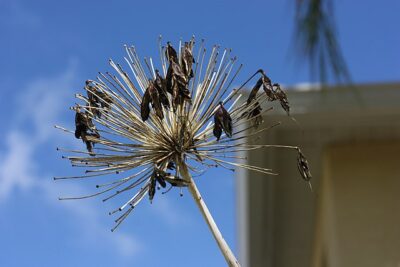
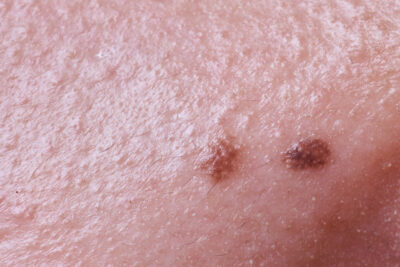
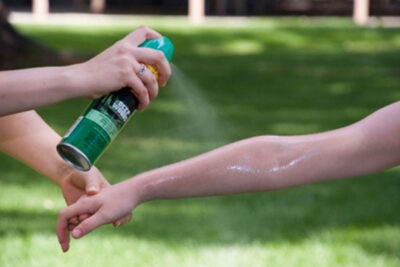

You Must Read